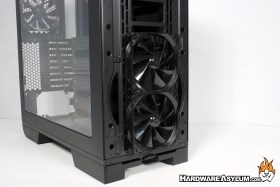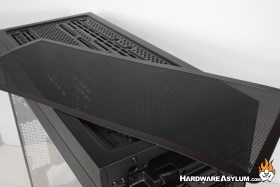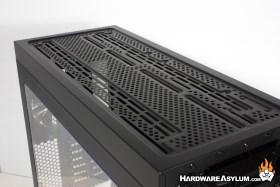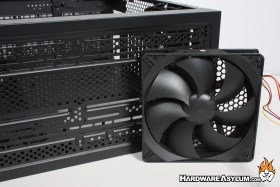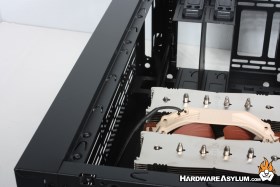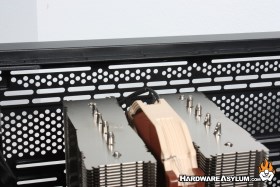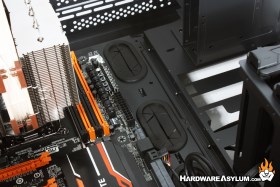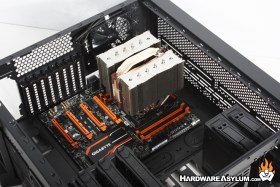Thermaltake Core V51 Case Review
Author: Dennis GarciaCase Cooling and Install
In terms of cooling the Thermaltake Core V51 comes with a good number of options. In stock form you will get a total of three fans, two intake and one exhaust. Per the usual the intake fans are located behind the front bezel and blow across the internal hard drive cages whereas the exhaust fan is located in the traditional location at the back of the case near the I/O panel.
The Core V51 is also “approved” for watercooling and based on what we saw at CES this year the intent is that when you buy a liquid cooling approved chassis you can also buy the liquid cooling gear from Thermaltake directly.
Removing the top mesh panel gives you an indication of what is available and according to the specs you can fit a triple 120mm radiator up there or just about any variety of dual fan radiator up to 420mm.
Sadly, and not much of a surprise, the Core V51 supports 140mm and 200mm fans but has no holes available for the Silverstone 180mm. Try as we might there was no hole combo available that allowed us to mount the fan with four screws. However, given that Thermaltake doesn’t make a 180mm fan there was little need for them to include that in the configuration.
In an attempt to provide a bit of scale we installed the Gigabyte X99 SOC Force to check motherboard alignment and see what kind of cooling clearances we have to work with. The Gigabyte X99 SOC Force installed we have plenty of room surrounding the motherboard to route cables and a good amount of space at the top of the case for additional fans and radiator.
The case supports radiators on all four sides and really the only location that comes into question is at the bottom. Depending on your PSU choices and cable routing the space down there is a little tight.
Much like the back of the V51 the top panel is mostly mesh with several slots cut into the panel. This allows you flexibility in the location of your fan/radiator installs and is an important inclusion in the case design since mounting radiators can be a little tricky.

